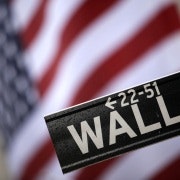A longer leash won't change the yuan
On Sunday, Beijing announced it was widening the daily trading range for the yuan to one percentage point. This news has been heralded as another indication that China is liberalising its currency, and the yuan may now be fairly valued.
This may be dead wrong.
In May 2007, when no one would dispute the yuan was undervalued by a wide range – by my reckoning some 40 per cent – China widened the trading range to 0.5 from 0.3 per cent to no substantial effect.
Theoretically, if market pressures require, the new band should permit the currency to appreciate or depreciate 1 per cent each day but in the past, official intervention has frustrated this process.
Mostly, Beijing did not let the yuan appreciate 0.3 or 0.5 per cent each day when those bands applied. The resulting pace of appreciation was substantially less than private market forces and these trading bands should have required, as evidenced by Beijing's accumulation of some $3.2 trillion in foreign currency reserves. We have no reason to believe things will be any different with a 1 per cent band, should upward pressures on the yuan re-emerge, as those likely will.
In recent months, the value of the yuan has appeared quite stable, despite persistent Chinese trade surpluses. The reported February deficit was a one off, not repeated in March, owing to the annual nadir in exports associated with the Chinese New Year. And, historically partner country statistics would indicate China's trade surplus is larger than officially reported.
Capital flows also influence the underlying market value of the yuan – the value that would be attained in the absence of persistent official intervention. Recent revelations of working conditions in Chinese factories, rough treatment of foreign investors' intellectual property, new restrictions on foreign investment in sectors like autos, and concerns about a Chinese property bubble, solvency of banks and growth prospects, together, may be contributing to a drop-off in foreign investor interest in China. Both foreign and domestic businesses may be holding off a bit on expansion plans and looking for other options in Asia.
Also, Chinese officials have liberalised a bit on the capital account – permitting Chinese exporters to keep some of the dollars they earn from foreign sales, and permitting private firms to be more aggressive in acquiring assets abroad – and these are creating some temporary downward pressure on the value of the yuan.
All of these capital account pressures on the underlying market value of the yuan are likely temporary and on the basis of the trade account, the yuan remains overvalued.
When assessed in terms of differences in productivity growth and inflation between the United States and China, the yuan appreciation permitted by authorities since May 2007 has not changed the fundamental undervaluation – the currency has been permitted to appreciate in line with net changes in productivity and inflation, and the underlying undervaluation of the currency remains intact.
Hence, over the long term, the yuan is likely still undervalued by some 40 per cent.
Peter Morici is an economist and professor of business at the University of Maryland, and former Chief Economist at US the International Trade Commission.
















